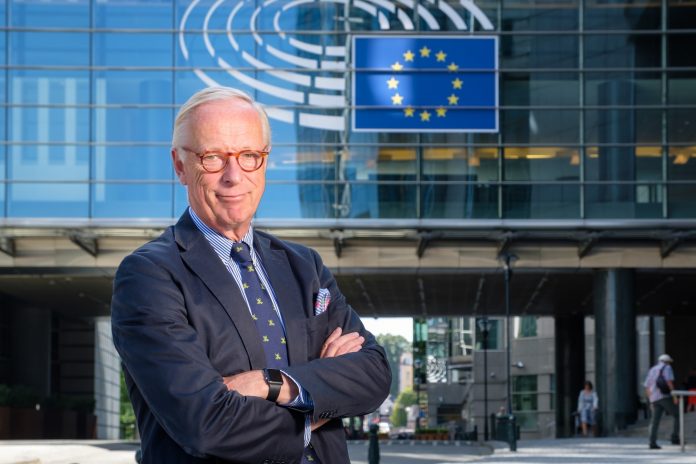Gunnar Hökmark MEP from the Group of the European People’s Party (Christian Democrats) explores the world of financial markets in Europe and asks if it is possible to avoid a crisis. He also explains the potential impact of the role of disruptive change to new technologies on the market
Is there a way to avoid a financial crisis? The answer is no. Financial crises will come, often as a result of high growth and rapid development. A disruptive change to new technologies may change the logic on the market and the game of competition or crises may suddenly emerge from financial instability, trade wars or conflicts. They can also come from misjudgements on the role of new or old business structures.
Bad investments have bad consequences and good investments will be followed by tougher times. When it happens, it influences financial markets, as financial markets measure the value and the development of the economy. That is how one can attract capital for investments, allocate it to the best investments and disinvest when needed. Financial capital decreases by losses and increases by profits.
The financial market is like a thermometer of the economy that sometimes goes better than expected and sometimes worse. Where there are growing economies and uncertainty about the future, there can be a crisis. Uncertainties in the short-run secure growth and prosperity in the long-run. Only failed economies avoid financial crises, because of constant stagnation without hope for new achievements. We cannot avoid crises, but we can reduce the magnitude and the consequences.
First, we need financial markets in competition, which can serve different technologies and business models. That is why it is important with a European financial market, to have a Capital Markets Union and competition. With the plurality of business ideas, different technologies, companies to invest in and private investors, we get tremendous risk sharing. There will still be defaults and insolvencies, but most of them will not influence other parts of the economy.
Financial markets are about analysing risks, taking risks and distributing them. Better opportunities to analyse risks means better risks will be taken. The more different the risks are, the better they are distributed.
Second, we need different investors. Capital markets union is of interest for anyone who wants to stimulate investments together with stable financial markets. The more capital for investments outside the banking sector, the less exposure for the banking sector to risks of the economy. We need to stimulate private shareholding, private equity, different forms of venture capital and private savings. When private households have better buffers for losses, they have better room for new investments, and stability.
Third, financial markets must be characterised by transparency and efforts directed to the best of the investors, savers or customers. Customers and investors need to know the risks. Investment companies need to serve the interests of the customers to facilitate profits to the company and the leadership. We have made progress in this context via the legislation on Mifid, IDD and Emir.
Fourth, banks need to be as stable as possible. They are the core of financial markets, necessary for payments, saving, investment making, liquidity making and financing investments. In Europe, they are financing the dominating part of small and medium-sized companies. We must ensure that they are not overburdened, unable to finance necessary investments, which would lead to financial instability when companies fail to grow.
It is good if banks can be based on different legs, like investment making, market maker trading, or their customers but not on their own interest, retail a deposit. Diversified banks normally seem bigger, but also more stable. That is why I opposed the proposed legislation on separating banks in two parts: retail and the rest. It would have hindered development to a better capital market, but also competitiveness on the global market, and reduced investment and market making where it is needed.
Now we are strengthening the credibility of dealing with banks in crises through the banking recovery and resolution directive (BRRD), which is the base of the banking union. We are introducing requirements on subordinated capital that will facilitate bail-in without rocking the financial system or public finances. With higher levels of own capital and sufficient debt for bail, we clarify that banks are exposed to risks just as every other company, meaning that risks in banks will be analysed and distributed the same as financial markets in other parts of the economy. Those who invest in the bank will pay for losses and deficits and will refrain from investing more than they can lose.
Fifth, public finances must be stable and on EU-level. We need a backstop in the form of European Stability Mechanism (ESM) that can stabilise banks when a bail-in is not enough and can lead to deeper crises. The ESM is important to make the bail-in instrument in the BRRD credible, meaning that markets know that bail-in will be used because governments have other alternatives if the situation becomes worse.
These five points make risks in the financial markets better analysed, taken by those who can take risks and distributed to avoid deep shock. This way we can reduce the impact of a crisis and prepare for new opportunities.
Gunnar Hökmark MEP
Group of the European People’s Party (Christian Democrats)
Tel: +32 (0)228 45822
gunnar.hokmark@europarl.europa.eu











